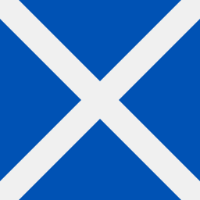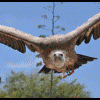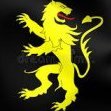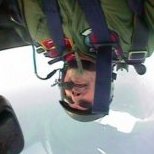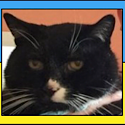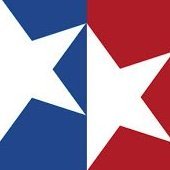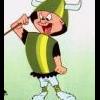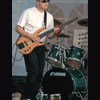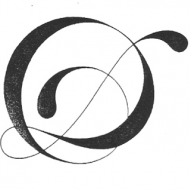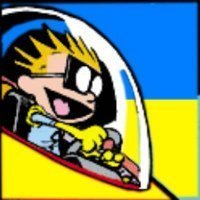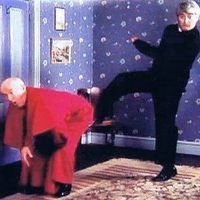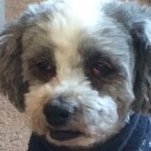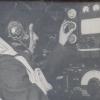Leaderboard
Popular Content
Showing content with the highest reputation on 09/09/20 in all areas
-
Here is my next summer build. Airfix's new Hunter boxing, a great kit apart from one thing... ...and the only shortcoming is of course Airfix's somewhat lazy solution not to include a new wing. As many of you know, you have to cut away the dogtooth and replace it with new parts (incluced in the kit). To get a seam-free wing, took about the same time as the rest of the build. Another problem with this solution, is that the small air intakes and outlets on the body (all on the wing part), are perfect for a F.6, but not for a F.4 that had another engine. Differences are small, and I didn't bother to fix it, but it is a bit annoying - especially when you know that a new wing would have solved both these problems. But apart from that, this is a brilliant kit. Fit is perfect and even the Swedish decals are great and useful - for the first time ever in an Airfix kit! I only replaced the letter on the fin, but that is only because I thougt that a red letter was more attractive than the yellow one on the decal sheet, My only addition was Eduard seatbelts: I wanted to do an early SwAF Hunter, so I avoided too much weathering this time. A really nice model of one of the most beautiful aircraft ever! Well done, Airfix! Apart from... you know...40 points
-
Probably about time I posted my first RFI! I have been rather intimidated by some of the excellent photography on here, and have struggled to get anywhere near decent shots in my little dark modelling den. Then I had a long overdue brainwave this afternoon and decided to just shoot outside on a roll of wallpaper lining and let Mother Nature be the studio ⛅ 📷 So, yes, it takes me six months to build a straightforward kit. No, I didn't build anything in between. 😂 Life with a VW camper has taught me it's all about the journey, not the destination ✌️ I've learnt loads of new stuff on this build though. I've had my first proper go at airbrushing the RAF camouflage, using paper masks. I've tried a little paint chipping with hairspray. I've used Flory Washes for the first time. And I'm really liking working in 1:48. Well, here it is. Using Xtradecal markings for 139 Squadron based at RAF Wyton in 1937. (I used Micro Sol on these, but was disappointed it had little effect on them) 1:48 Airfix Bristol Blenheim Mk.I by Mike, on Flickr 1:48 Airfix Bristol Blenheim Mk.I by Mike, on Flickr 1:48 Airfix Bristol Blenheim Mk.I by Mike, on Flickr 1:48 Airfix Bristol Blenheim Mk.I by Mike, on Flickr 1:48 Airfix Bristol Blenheim Mk.I by Mike, on Flickr 1:48 Airfix Bristol Blenheim Mk.I by Mike, on Flickr 1:48 Airfix Bristol Blenheim Mk.I by Mike, on Flickr 1:48 Airfix Bristol Blenheim Mk.I by Mike, on Flickr39 points
-
Hot on the heels of the MkI Blenheim RFI, is the belated Mk.I Spitfire that preceded it on the workbench, finished 6 months ago. Today's soft overcast light was ideal again, and all the tools I'd used for the Blenheim shoot were still handy. This conversion was mainly based on the 2010 mould of the 1:48 Mk.I Spitfire that I picked up cheap-ish second hand. (I was told the Mk.V Spit makes a better candidate for this conversion) The transfers were the Xtradecal ones. Again, this recent Airfix kit went together easily, great for a relative newbie to the hobby to cut his teeth on. I've lived in Southampton for years, and there is a ton of aviation heritage locally on the South Coast here, and having the prototype Spitfire to display on the shelf has always been high on the wish list. Supermarine Type 300 Prototype by Mike, on Flickr Supermarine Type 300 Prototype by Mike, on Flickr Supermarine Type 300 Prototype by Mike, on Flickr Supermarine Type 300 Prototype by Mike, on Flickr Supermarine Type 300 Prototype by Mike, on Flickr Supermarine Type 300 Prototype by Mike, on Flickr Supermarine Type 300 Prototype by Mike, on Flickr Supermarine Type 300 Prototype by Mike, on Flickr Supermarine Type 300 Prototype by Mike, on Flickr Supermarine Type 300 Prototype by Mike, on Flickr Supermarine Type 300 Prototype by Mike, on Flickr Supermarine Type 300 Prototype by Mike, on Flickr16 points
-
I bought this kit quite a long time ago, I think it was one of the first LSP's I bought. I did so because it was 69 bucks, at the time I thought it was a bargain for a large scale Macchi 202. The I tried building it and found out why there weren't many builds of this kit around. What I remember from doing the interior is it required sanding down the inside of the fuselage a lot to make the resin fit. I got finished doing this, turned towards the wheel wells and that's where I stopped. Years past with this kit sitting in the shelf of doom. The pile of dust on it was quite impressive. It almost hit he bin a few times, the only reason it didn't was because I'd hate to have wasted 69 bucks. I picked it up last month and decided come hell or high water I would finish it. The wheel wells that proved difficult to fit were thrown in the bin, I then progressively glued together the bottom wing to fuselage, then gear doors were put into place followed by the upper wing sections. Those did not fit well and all of the wing to fuselage joint area has been sanded and shaved heavily then rescribed to get a decent fit. The resin oil cooler was too small to fit the hole in the resin lower cowling, itself being slightly undersize. Some sanding of the plastic helped with fit here. Radiator was fine and the tail was average but some basic filling and sanding here fixed that. I did get stuck for a while with the canopy, windscreen and spinner. The spinner is too small for the backplate, this was just sanded to fit, which makes it slightly undersize, but oh well. I had to take a lot of plastic off the fuselage to get the windscreen and canopy anywhere close to fitting. I decided for the colours, I liked the profile of one of the around 20 Croatian machines used on the Russian Front. The pictures of these machines are not the best, so I just guessed at what the markings might be, figuring German insignia was most likely with the Croat shield in place of the swastika to make things a little different (but this kind of thing was done with at least 1 POA machine). Markings came form the spares box along with the pilot.16 points
-
Good day to you all from glorious Nova Scotia! Hope you are all doing well. This is my latest release, built as part of the Corsair GB which finished last month. Although I did manage to get it up in the gallery, it wasn't 100% finished so here she is in her (technically!!) finished glory. This is the Tamiya 1:32 Birdcage kit, done up as a Fleet Air Arm Corsair Mk I JT190 of 1837 NAS, based on the Eastern board of the US. This particular aircraft belonged to Squadron CO and Fighter Ace Lt Cdr Jackie Sewell DSC RNVR. Ultimately the aircraft claimed his life during a training flight when he collided with his Senior Pilot S Lt David Watson RNVR in JT198 over Yarmouth, Maine. Both pilots lost their lives and they both now lie at rest at the Military Cemetery in Portsmouth, New Hampshire. The kit was built more or less from the box, I added some fabric harnesses as they looked better than Tamiyas steel versions which aren't very flexible. I also added some cockpit stencils to add a bit of realism and interest to the standard cockpit. Points to note on the aircraft. JT190 didn't have clipped wings as it was a US based training aircraft, it also retained US harnesses and didn't have the rear view windows common in most Birdcage Corsairs. The aircraft is displayed having been pushed back for maintenance hence the tail wheel is meant to be reversed! The engine is a thing of beauty and really should be displayed so left the cowlings removeable. I added some ignition harnesses to the engine from wire. The insignia markings are painted, which was a great journey of discovery! The Royal Navy JT190 was from Xtradecal and I used the kit stencils. The internal paints were Mig Ammo, external were Vallejo for the sky, Model Master Gunship Grey from the EDSG and my own mix of Olive and Green for the Slate Grey. I used very fine thread for the aerials (if you can see them!). I think the weathering is slightly heavy but I am claiming artistic license for that! I also took liberties with the flaps which by rights should be stowed and the cowling flaps are closed where they should be open but the detail looked too complex and time consuming for this build! All that is remaining is the tape for the gun ports and also on the nose cowling there should be some sealing tape but I couldn't decipher the exact layout so left this out This kit was a truly wonderful build, the parts just fell together and the joins were nice and tight. In fact id anything didn't fit right it was down to me not fixing it in properly! If you want to follow along the build the link is below. Now the pics! JT190 in glorious technicolour (with a backward tailwheel!) And finally the Lt Cdr Jackie Sewell who inspired this build, RIP. Bob15 points
-
'The Swoose II' B-17G-30-BO 772 BS / 463rd Bomb Group The name Swoose originated from a B-17D that was one of 19 out of 35 Fortresses in the Philippine Islands that survived ground attacks from Japanese forces on the 8th Dec '41 shortly after the attack on Pearl Harbour. It was given it's name by Captain Weldon Smith following repairs undertook in Australia in January 1942 where the tail of another aircraft was grafted on, the name being derived from 'Half swan, half goose' inspired by a song at the time called 'Alexander the Swoose' about such a bird! The aircraft was later flown by Captain Frank Kurtz choosing the aircraft as a personal transport for General George Brett. Later in 1944, Kurtz commanded the 463rd BG in Italy as part of the 15th AF and had a B-17G named after after his earlier aircraft, Christened by his wife 'Swoose II' shown in the photo above. It survived the war and was eventually salvaged in May '45 despite a few scrapes along the way. When I heard that HKM were releasing this in 48th scale, I had to get my hands on one. I had been planning to build the Monogram one, but kept stalling because of the work that would need to be involved to get it to a decent finish although the shape is very good. The HK kit goes together very well and the nose shape was corrected following the evident inaccuracies of the 1/32 kit. The only major issue in my opinion is engines being about 3mm too high, but I decided to leave as they are to prevent ruining surface detailing. It's been a pleasure to build and has plenty of detail straight from the box. As with most builds, I try something new. This was the first model I've painted with the MRP paints which are a delight to use although due to not being happy with the shades used, I ended up going over it with a mix of Tamiya paints - mainly khaki lightened with some white. Another step forwards was a rather heavy weathering approach, particularly on the under surfaces where photo's show a lot of mud splatter. I used a toothbrush at the suggestion from @Josip and following reference pics from @Rakovica. The build can be seen here Anyway, here's the finished result. I appreciate some don't like excessive weathering, but I've tried to replicate what I've seen on photo's of weathered B-17's. Cheers Neil14 points
-
done in the fantastic but unfortunately bit too short Bucc GB this summer voting for the other more successful finishers is still on by the way! (till 09/21/2020 ) Ingredients: Airfix Buccaneer 1/48 Neomega resin cockpit Kits World Decals Master Pitot Eduard PE (very limited) Brassin Paveway II CUP 123 britmodeller input patience WIP here hope you like her! cheers, Werner14 points
-
With the transparencies in place more work on the interior is done:14 points
-
I have always wanted to build the RMN Super Lynx. The Malaysian Navy owned 6 of these. They are of the 501 Squadron based in Lumut, Perak, Malaysia. Started this little project over the lock down period and voila it is now complete. As you can see, there have been many add ons, through scratch buildings. The base was additively manufactured (white pla) using Ender 5 pro. The frigate base was from coastalkits (bonded and blended with the base). The base kits were 1x HobbyBoss 1/72 Super Lynx (RN) and backed with a Mk88 (German Sea Lynx) to give me the 2 Sea Skuas/to create the folded tails. The engine bay for mk100 conversion was from a Malaysian company (named Naza Model Art). I used a lot of Tamiya epoxy putty for the scratch build. Enjoy! Shakir (Southampton)13 points
-
13 points
-
Hello everyone, due to a very full schedule there is no progress with the Camel at all, so I thought I'd show you another of my semi-finished works. I had picked up the kit during a sale in my toy shop just round the corner from work, and then it sat in my stash. The toy shop closed down, I changed workposts, moved, married... the stash list said "B-26" for over 5 years. I know that's nothing for some of you here...for me, it was a very long time. I don't know what made me start, but once I got off, I couldn't stop. The kit was great, with very little to complain about. Counterweight is everywhere under the floorboards, next to the nosegear well, in front of the bomb bay... it was well worth the extra work. As always, some things I am most unhappy with. The very noticable step where the wings attach is sort of a necessity, as the wings aren't glued on for easier packing (displaying room is very limited since the guest room/PC room/model gallery turned into a children's room) but held in place by magnet. I have access to quite a lot of those on my work, and I love using them in my builds. And of course, one of the guns of the tail gunner keeps breaking... As the original made it home on over 200 missions, the look of the plane is rather battle-worn. At least that is what I intended to show without the opportunities an airbrush would grant me. Ooooh, the close-ups. I like the decal, and the fact that I put a visible crew on board. I don't like the fact that it is obvious on the clear parts how bad my brushwork can turn out. Yes, tail-end-Charlie is also on board. As usual, I spotted things on the pics that I forgot to do, like paint the outsides of the gear bay covers 🙈 Not my best, but definitely not my worst, and anyway, a model is never truly finished with me on the paint&glue controls. I hope you have some fun and are not in too much pain while looking at my build, Johnny Tip12 points
-
I've owned a few Ford Capri's over the years from 1.6 up to 2.8i and always found them great fun to drive, although you always needed a few bags of sand in the boot to keep them on the road , but I have always had a soft spot for them. So I spotted this kit on Ebay going cheap as the body was damaged, and I am really pleased with the outcome, the repair is far from perfect but I am happy with it. Although I might go back and try and repair the A pillar better. Last week I brought another Zakspeed Capri kit with different livery, so looking forward to building that, but the prices are getting silly now for these kits.11 points
-
Test assembly of the model. The main task was to show the capabilities of this set. I hope you will like it. [/url11 points
-
..you got to be startin something, I say you wanna be startin somethin, you got to be startin somethin.. I guess the Michael Jackson lyrics are pretty apt to what's going on here at the moment. With a 48th scale Lightning F6, 24th scale Hawker Typhoon and a Type IXC42 U boat on the go at the moment, along with a Phantom FGR2 and B26 Marauder oil paintings, it would be poor discipline to be even contemplating starting anything else until these are finished off? Then again, if you manage to get a break from work and something takes your fancy in your bit of spare time, then what harm could it do just to 'start dabbling a bit' just to find the 'lie of the land' with a project? I'm obviously a serial starter and will have to get serious and finish one of the other projects soon, but life's too short and I just fancied tinkering a bit. I would probably advise against pulling up a chair, as I'll be nipping in and out of this and the other projects and I fear this will be a long haul. Anyway, I'd been looking at this kit and thinking that it might look good (to me anyway) with the pilot sat in it, if only I could make him look 'up to scratch' enough to be included (as against the belts just sitting in the seat of an empty cockpit). Some dabbling later and I'm starting to get a of a sort of plan going and the head's starting to look like a 'head' I hope. Bodywork to come later. Kit part with visor (made from Eurofighter Typhoon 48th scale spare external tank), oxygen regulator, mask and milliput life vest added so far. Nick Greenall (who has been a tremendous help with research and a complete inspiration with his build) suggested he might look better with the head turned slightly (if I could saw it off still). That done, I remodelled the right arm and hand to replicate a signal in a scene in a video I'd come across, but realised that I'd have to paint his head before it becomes permanently fixed to his body as there isn't much clearance between the head and hand. I made a peg for the head to sit on. Here the head is just balanced in the body for effect to see where we're going. Obviously a long way to go with the body and all (he will be wearing an immersion suit) and check out those unsightly seams (!), but it's a start. Hopefully more to come. Cheers Bob.10 points
-
Finally finished after I started it during the RAF Centenary GB back in 2018. Built using Neomega cockpit with pull handles added from wire, Red Bear resin wheelbays , Master pitot and Flightpath intake covers. The decals are from various sources including the kit (original 1994 issue) , Model Alliance and Kits World. The Sea Eagle missiles are from two Kinetic Sea Harrier kits.10 points
-
Think I am calling this done before I mess anything else up and have to touch it up. This was for the Spitfire/Seafire GB that I wasn't able to finish on time. Built the Vb non Trop version back around 2002/2003. The only two issues I really had were the Trop lower nose section (filled and rescribed) and the wing root. For the wing root I matched everything up, which basically meant working from the tips in. That left a gap that was filled with plasticard and some brushable sprue goo that I made. Had a horrible time getting the underside roundels to conform to the little bits.........lost track of how many times I sliced, pricked, coated them (can I borrow your calculator to figure it out?). I lost the rectangular mirror so I just tossed the round one on.........field change let's call it. Mostly out of the box with the exception of; Ultracast wheels, Ultracast Exhausts and Print Scale decals. Hair spray chipping for the main larger areas, pencil for the rest. Painted with Tamiya paints, weathered with various oils, AK/Mig washes and AK Pigments. Final picture is the 2002/2003 shelf queen version...........other than the upper antenna mast and lower pitot tube it has lasted pretty well.10 points
-
Finally done! Airfix 1/48 kit of the Supermarine Spitfire F Mk 24. Painted as an aircraft serving with 80 Squadron, Kai Tak, Hong Kong, 1950. WIP can be found here: Best regards, Ragnar9 points
-
Evening All.... Some pics of my latest build.... Eduard. Bf 110 Overtrees Eduard Cockpit & Nose Gun Set Paints Tamiya, Gunze, MRP, Vallejo Bunch of scratch parts.... All the best for your current builds and thanks for looking! Cheers Hans Once the fuselage is closed not much is seen in that scale but it's there.....9 points
-
9 points
-
'Scratch and sniff' kits Ian. There's an idea! (Thanks for your kind comments). The spirit of Donald McGill is strong in this thread Pete! That's a beautiful phrase isn't it? Mr.James was also an expert on WW2 pilots and aircraft as I recall seeing a television interview with him astonishing his interviewer with the the depth of his knowledge on the subject. About 4.5cm in length.... Anything 0.2mm thickness or above should print Giorgio - as long as it is solidly supported either by the surrounding structure of the aircraft of else with the printing supports added later on in pre-print preparations. In deciding which features will print as part of a larger ensemble structure and which need to be printed separately, the actual orientation of the parts in relation to the vertical print axis is another variable that if juggled correctly can help avoid having a forest of supports to deal with later. The latest version of the Chitubox printing software has simplified matters enormously and continues to improve in facility with each release. Anything falling below that 0.2mm threshold is immediately disqualified from my designs at 1/72. Am now curious what they call actual donkeys. Don't tell me they're referred to as Avons.... Being an introvert by nature Benedikt, limelight has the same effect upon me as sunlight upon a vampire. You're exactly right! Sage advice Michael, though if course such things rarely stop those gripped by the obsession/passion/adventure do they? More details incoming James! 😁 I've a bunch of drawings from the manual I need to look up as those items will get done in the near future as well. Not sure if that series of shallow bulges/undulations along their surfaces will reproduce at this scale but we'll give it a go... Work has become increasingly intense and complex of late with regard to planning activities around the various health restrictions on spaces and numbers but despite these pressures, I've been deliberately making time to carry on with the designs here as a useful way of detoxing from the day's demands, to the point that as of tonight, I think I've finished adding all that can be usefully printed in direct proximity to or as part of the engine. Any extra piping that surrounds the engines in the bays will form separate elements installed after the engine has been installed at the construction stage. Here's an exploded view then of what got produced over the last few days: There are of course further details for things like the fuel control unit that sit right underneath these engines but as these are either obscured by the photographic angles from above/side in most reference shots or else obscured by Stygian shadow, I'd rather leave them off than invent fictitious outlines and proportions. A quick walk around of the above parts added in series at their respective positions around the Avon. 1. Bleed valve on the starboard side: 2. Igniter unit (slung underneath) plus something above it that I think is to do with the oil system/cooler (I'll have a thumb through the engine manual later to see if I can identify that part more clearly for you): 3. Air starter intake pipe: 4. Mumble mumble I think this bit is to do with the fuel pump system: 5. The ring of (what I think are) the igniter plugs immediately forward of the combustion chamber: 6. Anti-icing supply to front manifold on port side: 7. Cabin pressurizing and anti-icing feed to forward section on starboard side: Belt and braces with everything on: Having recently acquired an external graphics accelerator for the laptop to run projects at work, I realized that I'd not yet given any of the Sea Vixen designs a run through at the high res. render setting ad was pleased to find it blisteringly fast compared to what the laptop had been able to achieve on its own. What follows then is a virtual walkaround of the completed engine - far, far too shiny in appearance and lacking any detailed colour work that would be present in the finished painted object, but this should at least give a better sense of its eventual emergence as a physical entity: Finally, a few shots of it in the fuselage to give an idea of it in its final setting: As long as there are no nasty surprises in the next couple of days it might be time to do a test print of the engine so at the weekend. Thanks for looking in! Night all. Tony9 points
-
Ok, here’s the matt cote, port is without the khaki, starboard is with. I think without will do, but I do like the fading it has instantly added. I may do some here and there. Ratio was about 30:1, literally a drop. Great idea guys, looks great!! Also carried on with some engine mess on the wings. Sorry about the orientation of some of the pictures, difficult to manage on the mobile!9 points
-
Woohoo - I am finally calling my first kit after 30 years done. Actually now all the decals are on, it's been clear coated etc I am pretty happy. I was going to display it engine cowling off but I may keep it on (note I have taken it's good side, the other side doesn't fit quite as well but the cowling was pretty warped so had to work it into shape). There are some errors and a few bits with hindsight I could have done better however it is certainly the best model I have ever produced and have plenty of new skills to take forward with my next builds.8 points
-
Bronco Akula II Class Attack Submarine K335 Giepard, Scale:1:350. (Converted to K-152 Nerpa) INS Chakra, simple kit, no fit issues I had to scratch build the "bulb" located on top of the Akula's rudder, its towed sonar array. when I was almost done the decals disintegrated. I wrote to Bronco and they agreed to send me a replacement, I had to pay for postage. the INS Chakra is self made decal. I used humbrol enamel paints and humbrol matt varnish to finish it off after some washes with white oil paints.8 points
-
The tenth finished model of this year is this Short light aeroplane called Satellite (or"Parkers tin kettle"). Typical eastern kit but really easy to build due to the few parts included. I upgraded some parts of the model such as the tail, engine and cockpit. Only thing that bothers me is that my wings have no lift as they should have. Too late for a repair Hope you like it Details: The End Cheers, Andrew S.8 points
-
Westland Whirlwind Mk.1 - 263 Squadron RAF - 1941 Classic Airframes model with EduardPE (for Trumpeter), some scratch in whellbays, cockpit, full riveting. Invite...7 points
-
Hi folks, since no one has objected so far, here's another post of a model I built a while ago. This is a kit by Mea kit43, a French company with a quirky approach to models (they also make 43rd scale motorbikes, I have a Norton Commando waiting in the stash). I thought this one was sufficiently interesting to warrant its own post. I've included some in progress pics here as it's not a WIP. Here's what you get in the box. Too much photo etch. 1 bag of tiny resin. White metal wheels with more Flash than a comic book convention. Headlights and wires 2 bags of tiny parts. Basically you assemble the chassis from photo etch parts, it makes for a very accurate chassis, but it is fiddly. I soldered the parts rather than glued them as I wanted to be sure it would stay intact. Rear suspension and axle assembly installed, springs over white metal dampers, white metal axle and another piece of photo etch for the rear bulkhead. The side panels are also photo etch, some very delicate bending was require to get them to sit properly. More bent photo etch for the rear panel and white metal parts for the front suspension. This is the point at which I had clearly lost my mind, I thought it would be good to and some wiring detail, so we have plug leads, battery leads, throttle cable and brake pipes. I don't know what I was thinking. Seats and transmission tunnel were resin, piping was just a hand painted white line. The nose cone did not fit at all, completely the wrong shape. Much better. The kit came with the swept wings, which are probably correct for this model, but i've always liked the look of the cycle wing, some plasticard, putty, wire and a little swearing and done. Just need to spray, polish and we're done. For all the 24th, 12th and 8th scale folks out there, that's a 6 inch steel rule and a 10ml pot of Tamiya paint, just to give you an idea of how tiny this thing is. Thanks for looking, more to come, probably take a few days off posting now, I'm having flashbacks to fitting plug leads on a 1/43 Ford Xflow. Cheers - Rab7 points
-
This is my take on Bf109K-4 '334265' - discovered un-serviceable at Amberg in April 1945 after being either damaged in combat or strafed on the ground - I guess we'll never know. The aircraft carried no unit markings and the only identifiers on it were the last three digits of the WNr spray-painted freehand onto the rear of the fuselage. Typical 'mix n match' late-war colour scheme, which made it a lot of fun to paint. There seems to be some dispute over the wing camo colours, but I went with a best guess. The Hasegawa kit, despite being fairly old, went together well. I used the kit swastika decals, but the rest of the markings (there aren't that many anyway) are Montex masks. Anyway, hope you like - comments and criticism positively encouraged7 points
-
#19/2020 After the Yugoslavian Bf110, here´s another one with non-German markings. Cyberhobby/Dragon kit, built it almost two times. The model was already in a progressed state when it had an accident....bought a new kit and my dad started all over again. Painted with Gunze H67 RLM65, Tamiya XF-22 RLM Grey and Gunze H64 RLM 71. Oversprayed the German markings with Gunze RLM02. EZ Line for antenna wires, brake lines and life raft ejection system , Eduard seatbelts. Build thread here https://www.britmodeller.com/forums/index.php?/topic/235071717-babylonian-schmitt148-messerschmitt-bf110d-3-sonderkommando-junck/#top The model shows one of the ZG76 aircraft that were sent to the middle east and served under Iraqi markings in May 1941. infos here https://en.wikipedia.org/wiki/Fliegerführer_Irak DSC_0001 by grimreaper110, auf Flickr DSC_0002 by grimreaper110, auf Flickr DSC_0003 by grimreaper110, auf Flickr DSC_0004 by grimreaper110, auf Flickr DSC_0005 by grimreaper110, auf Flickr DSC_0006 by grimreaper110, auf Flickr DSC_0007 by grimreaper110, auf Flickr DSC_0008 by grimreaper110, auf Flickr DSC_0009 by grimreaper110, auf Flickr DSC_0010 by grimreaper110, auf Flickr DSC_0011 by grimreaper110, auf Flickr DSC_0012 by grimreaper110, auf Flickr DSC_0013 by grimreaper110, auf Flickr DSC_0014 by grimreaper110, auf Flickr DSC_0015 by grimreaper110, auf Flickr DSC_0016 by grimreaper110, auf Flickr DSC_0017 by grimreaper110, auf Flickr DSC_0018 by grimreaper110, auf Flickr DSC_0019 by grimreaper110, auf Flickr DSC_0021 by grimreaper110, auf Flickr DSC_0022 by grimreaper110, auf Flickr DSC_0010 by grimreaper110, auf Flickr7 points
-
An update - job done! Thank you to all, @iainpeden, @Antti_K, @Kes, @Robert and @Mr T for your advice and encouragement. I took the plunge this morning after practicing on two surplus canopies where I either carved-away some detail or in the case of another, gently used a newly-acquired Dremel to remove 30+ year old paint. Both were polished-up using Micromesh and for the first time ever, I dipped them in Kleer. Crikey - what an effect that has! Below is a composite image of what I did today: The original canopy before I started. No going-back: I had ground-off the MDC using the Dremel and a fine detail head. Mid rubbing-down using nine different Micromesh finishing pads. After rubbing-down and using Micromesh's polishing liquid and cloth. After dipping in Kleer. This has been a breakthrough for me: I never thought I could do it and I am grateful to you all for your support. Cheers, Neil7 points
-
7 points
-
Been working on this on and off for the last year. Aftermarket decals otherwise completely scratchbuilt. Pretty pleased with the result.6 points
-
Hawker Siddeley Dominie T.1 (A03009V) 1:72 Airfix "Vintage Classics" This is one of those aircraft you see and you are not sure straight away about its linage? The aircraft was originally designed by de Havilland as the DH.125 Jet Dragon, and entered service as the Hawker Siddeley HS.125, and later the British Aerospace 125. It has been said this was the UK's most successful business jet with many civilian, and military operators throughout the world. The Royal Air Force purchased 20 to be used as navigational trainers under the designation Dominie T.1 This aircraft would continue on in RAF service until 2011. The Kit This is the Airfix tool which was new back in 1968. Now it is a product of that time however this does not make it a bad kit, just different to what we see now. There is not a great amount of surface detail, and whats there is raised. Their is an interior for the cockpit but nothing at all for the rear. Construction starts here with a decal being provided for the instrument panel and two generic figures if you want to use them. A solid bulkhead separates the cockpit from the rest of the aircraft. There is a one piece lower main wing to which the left and right uppers are added. Separate ailerons are provided. At the rear the tailplanes and control surfaces go on. This e full span part split upper/lower with separate flight surfaces. The top of the tail then goes on after this. The Rolls Royce Vipers then go on, one each side of the tail. Flipping the model over to finish it off the landing gear and gear doors go on. Markings Decals are from Cartograf so that guarantees no issues with them Decals are provided for XS712, 713 and 714 from No.1 Air Navigation School, RAF Stradishall, UK 1968. Conclusion Not all old tool kits should be consigned to history and its good to see this one being re-released. It is good to see Airfix releasing this under the Vintage Classics" label thus assuring people know what they are getting in the box. Recommended. Review sample courtesy of6 points
-
The Airfix WIldcat starter set more or less out of the box, with replacement US insignia (the kit ones are wrong) and white prop cuffs. A really nicely engineered kit and a joy to build. Cheers, Luka6 points
-
Not entirely sure how relevant this is -- forgive me, if it's "Not at all..." -- but the passing mention of Baltimores and the TSS scheme caught my attention. When I was doing my Frog Baltimore some years ago, I chased a written account of how the aircraft had been repainted in TSS after leaving the desert and relocating to Malta to operate with 69 Squadron there. I turned up a splendid 'color' photograph online...said to be of one of the squadron's a/c...fully aware that as a self-declared 'non-expert,' I can never quite be sure what's merely colorized and what isn't -- but I thought I'd throw it into the mix, for whatever it's worth: In any case, it's a great find, finding a relative's aircraft in an old photo. I wish you great success with your project! Cheers6 points
-
Well, it's been a rollercoaster for the last 15 months or so. I never said I was quick... Presented for your delectation is HKM's Great Big Lancaster. Build log is here. I decided to do an approximation of R5868 as she is now in Hendon, so that means the groovy two-tone squadron codes, paddle blade propellers (handily, they come as an option with the kit) and some extra radar kit over and above what the version of R5868 the box builds is equipped with. Again, the parts are in the box; I augmented them by removing the moulded antennae and replaced them with wire. Things to note - it is engineered to extremely tight tolerances, such that paint makes a difference. Once the wings go on, certainly the one associated with the transparent fuselage side ain't coming off again, so if you have any ideas about removing them for storage, be warned! I thought I would indulge myself in spiffing it up a bit, supplying copious amounts of entirely fictitious wiring looms and pipes within the fuselage and engine bays. You get 4 engines OOB; they are a bit skinny but hey-ho, I wasn't in the mood to acquire 4 Tamiya Spits or ZM Mustangs just for the engines! Painting the internal framing was an act of insanity, but if you want to do it I recommend *not* masking and then painting the frames - just freehand the frames and polish off the edges with a wooden toothpick or similar, the transparent plastic is surprisingly robust. The front section was done with masking, the rear was free handed and then cleaned up. I experimented with one of the spare opaque fuselage halves with cutting out the panels to leave the framing... I wouldn't do that, if I were you! Paints were Tamiya for the camouflage, a mixture of Tamiya and LifeColor acrylics for the black areas. The codes and insignia were custom masks made for me, I have a few spares if peeps are interested in buying some. The Goering quote proved to be just too spindly, so it, along with the walkway stencil writing, are just about the only decals I used. Camouflage masks were from Top Notch. Right, on with the show... A couple of overviews, left and right sides: Some close ups of various bits: And finally, these two: I think I'll take the summer off, until the Special Hobby Whirlwind finally appears. Although the ICM Gladiator looks like fun... It'll certainly be smaller! Laters, taters! Mike6 points
-
Wow! Two immense compliments, really. Thank you very much gentlemen... It's the ultimate goal. I try to... I just try to replicate these parts, at that time all mechanical parts, everywhere, was beautiful! About brakes parts... How to? Stamping: Of course brake drums have been realized on the lathe. Dan.6 points
-
Another stripey jet completed & ready show... This is another scheme that I've really wanted to do. So after a couple of years enquiring & looking I found that JBR decals on facebook. They had re-released this decal sheet at the end of June. Looked like his run of 1/72 decals were really popular as they've already sold out. Nicely laser printed tail fin & canard markings & the fuselage & wing markings are screen printed. Very thin, but with some patience went down very nicely. Revell 1/72 Saab JAS-39C 9234 JBR Decals "100 Years of the Czech Air Force 2018 NATO Tiger Meet" As with my last Czech Gripen, the only other aftermarket used were Master brass pitot's. Painted using Hataka acrylics & Xtracrylic Matt plus Mig panel line wash & Tamiya weathering powders. And a couple of pics of the two Czech Tiger gripens together. Thanks for looking! Martin6 points
-
Special Hobby Grunau Baby IIB 'Over Western Europe': This kit has 28 parts and is a quick build, but it is a recent production and appears very accurate and detailed. It has separate ailerons and rudder, while the elevators can easily be cut away so as to deflect them to the normal position seen when the glider is resting on the ground. The cockpit cover is a single transparent part incorporating both the windscreen and the little circular windows for illuminating the instrument panel; much easier than trying to fold a tiny piece of acetate. There are decals in the kit for French, Spanish and British gliders, including one belonging to No. 123 Gliding School at White Waltham. The instructions call for all three options to be painted in RLM 05 Elfenbein (ivory), however the only references appear to be black-and-white photos, and as far as I am aware the Air Cadets were never a branch of the Luftwaffe, so it is instead in standard RAF training colours for the late-1940s. The roundels above the wings were replaced by some slightly bigger ones. Meanwhile, one of the fuselage roundels dissolved under a misdirected spurt of glue and had to be substituted by one meant for an Airfix Bulldog. . .6 points
-
Not much progress today. Just wasn't in the mood. I did do a search for the airbrush's holding bracket. Eventually did find it, on top of the spare parts organizer, under some other stuff. I also drilled out the back end of the venturi and mounted. It only sprang off onto the table four times. Luckily, I found it every time, but the last one took the longest search. Coffee time! Chris6 points
-
Source: http://www.modelarovo.cz/de-havilland-dh-103-hornet-azmodel-1-72/ V.P.6 points
-
Good Morning everyone... I had a sad day so needed to take something off my mind, my best friends mom passed and I went to her memorial today. Somebody Ive known for 41 years and it was hard to deal with. So I Pulled another all nighter tonight to focus away from the day. I decal’d three of four builds on my desk. This was one of them, the others were a Spitfire Mk.IX, Mustang Mk.IV, and my Cessna Birddog over in the Vietnam group build. Please feel free to ask questions, post comments, and or add thoughts. Dennis6 points
-
Thought I would show some progress photos of this kit which I recently acquired to join my same scale Lancaster and scratch built OIL bowser. The usual box and parts photos . . . . I would just like to say that this is the FIRST resin model I have attempted. The parts are very crisp and I am liking the detail . . . I will be wanting to make a few alterations to the kit that I have observed from numerous photo of tractors, primarily the front nudge bar and the positioning of the lights and decals. Talking of decals, there are numbers that represent No's 2, 4 and 5 bomber groups but not my particular group, No. 1. Not a big issue More to come Ian5 points
-
I've never made a Dragon kit, and as I remember these vehicles from when I was a child, I thought it might be an interesting and easy build, no internal detail at all. Following are a few pictures of the parts and then what I've gone so far. A few strange things so far, I'll comment next to the picture. Jon Next, work so far. Next, a wheel. Strange colour for the soft plastic tyre. I mention at the start that there were some strange things. Here's one. According to the instructions, the 'wishbones' in the next two pictures, are NOT to be glued in place. However, if I don't they will just fall off. So after much experimenting, they have been glued in place. Neither the suspension, nor the steering work so this won't be a problem. Jon.5 points
-
Brought this kit on a bit of a whim, and because it was pretty cheap. It is a nice little build, but looks a little toy like I reckon. It is painted in Peugeot Sun Burst colour from a rattle can, and then gloss coated with a few coats of Klear. The doors are pretty fun to build, with what look like large paperclips, but they do the job.5 points
-
5 points
-
Not stalled, just sidetracked. Painting this thing. Well, primer, at least. Probably the most stressful part of a build, and if I say it’s not going quite as well as I’d hoped you’ll understand what I mean. For locos and rolling stock I like to prime with a red oxide colour, as that’s pretty much what they did on the real thing. If the livery colour should ever get chipped, the hope is the red oxide will show through rather than shiny brass. Anyway, having something of a love-hate affair with acrylic rattle can primers of late, I thought I might try an enamel base coat on the Martlet. Humbrol sells tinlets of a pale grey substance they refer to as "primer". It’s just bog standard enamel as far as I can tell, like the acrylic version is just acrylic. Anyway, I thinned it using Humbrol's thinners and whizzed it through the airbrush while the extraction cabinet doodah was deployed. We will see if it turns out more tenacious than plain acrylic, and remaining stuck to the plastic during masking sessions, later. Now to take a hard look at something and decide whether I really want to deal with it. Adulting is hard work.5 points
-
5 points
-
Okay, so lower part of the box is complete. Finally. Anyone else wants to try this, just leave off the exhaust pipe fitting. You’ll have a lot more room and can use thicker card.5 points
-
I just did a dry-run of the whole fuselage assembly. The fit is despicable. But that is the word I had to use perforce, because the word I really wanted to use would had me expelled from this prestigious Website and Forum. The engineering is nonsensical and I am seriously thinking about calling upon @Martian ahem... drastic methods to deal with its designers. Yes, brute force, lots of glue, merciless shaving and a bucket of filler may do, but I rather tweak the fit until I am satisfied with a reasonable result (a stage that now seems far away). I like to think as the work performed to improve a kit as something you lay upon it basic nature, but here it's actually struggling first to obtain a half-decent base. I have, like most of you, built during my life tons of Airfix kits. This one is among the worse I have encountered. Yes, I know it's very old (1968), but really...5 points
-
5 points
This leaderboard is set to London/GMT+01:00

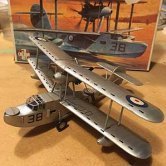

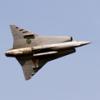


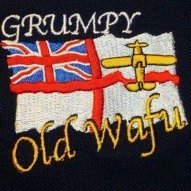

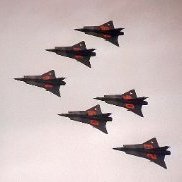

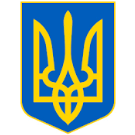
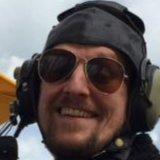

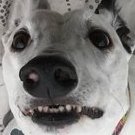
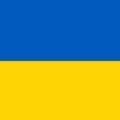
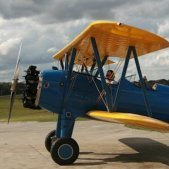
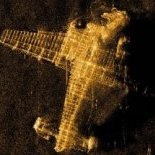


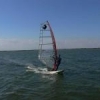
.thumb.jpg.85b0bd1b23acb88e6a79720372668e78.jpg)
